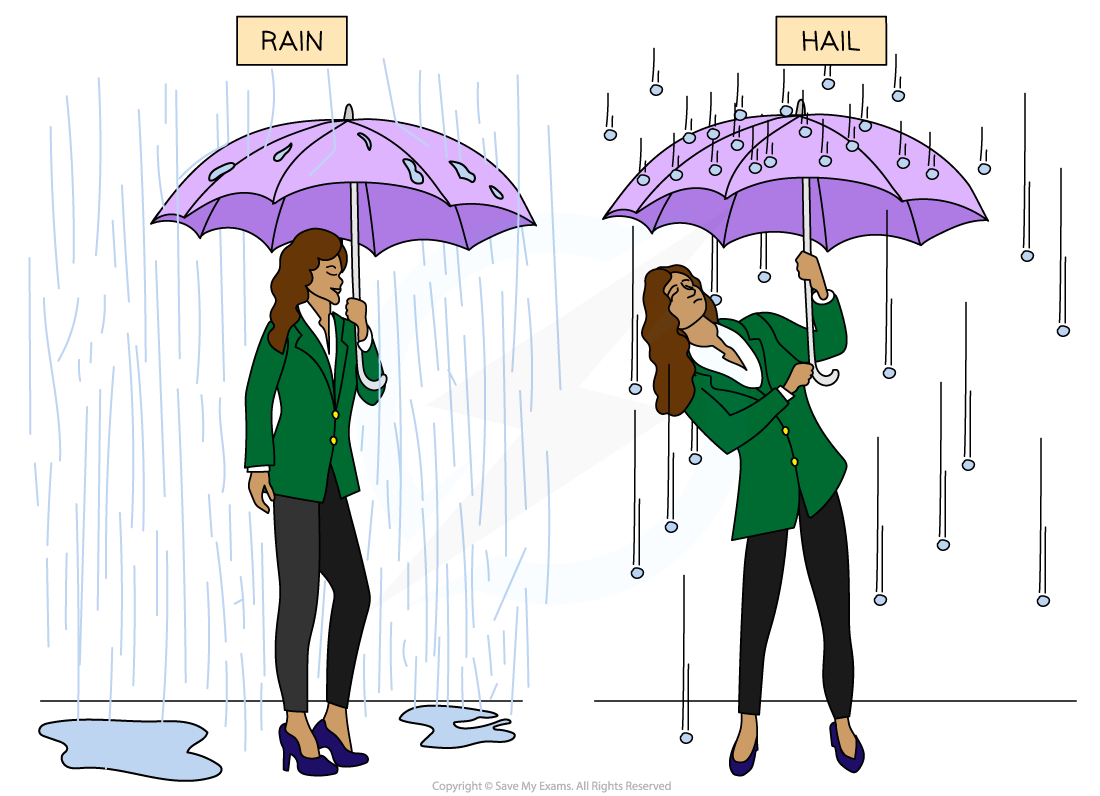Impulse (Cambridge (CIE) IGCSE Physics): Revision Note
Exam code: 0625 & 0972
Did this video help you?
Impulse
Extended tier only
When an external resultant force acts on an object for a very short time and changes the object's motion, we call this impulse
For example:
Kicking a ball
Catching a ball
A collision between two objects
The impulse equation
Impulse is the product of the force applied and the time for which it acts
Where:
= resultant force, measured in newtons (N)
= change in time, measured in seconds (s)
Therefore, the units of impulse are newton seconds (Ns)
The impulse of the resultant force is equal to the change in momentum of the object
Change in momentum can also be described as:
Where:
= change in momentum, measured in kilogram metres per second (kg m/s)
= mass, measured in kilograms (kg)
= final velocity, measured in metres per second (m/s)
= initial velocity, measured in metres per second (m/s)
Therefore:
Examples of impulse
When rain and hail (frozen water droplets) hit an umbrella, they feel very different due to the impulse of the force
Water droplets tend to splatter and roll off the umbrella because there is only a very small change in momentum
Hailstones have a larger mass and tend to bounce back off the umbrella, because there is a greater change in momentum
Therefore, the impulse that the umbrella applies on the hail stones is greater than the impulse the umbrella applies on the raindrops
This means that more force is required to hold an umbrella upright in hail compared to rain

The impulse exerted by the umbrella on the hail stones is greater than the impulse exerted on the raindrops.
Worked Example
A 58 g tennis ball moving horizontally to the left at a speed of 30 m s–1 is struck by a tennis racket which returns the ball back to the right at 20 m s–1.
(i) Calculate the impulse of the force exerted by the racket on the ball
(ii) State which direction the impulse is in
Answer:
Part (i)
Step 1: Write the known quantities
Taking the initial direction of the ball as positive (the left)
Initial velocity,
Final velocity,
Mass,
Step 2: Write down the impulse equation
Step 3: Substitute in the values
Part (ii)
State the direction of the impulse
Since the impulse is negative, it must be in the opposite direction to which the tennis ball was initially travelling
Therefore, the direction of the impulse is to the right
Examiner Tips and Tricks
Remember that if an object changes direction, then this must be reflected by the change in sign of the velocity. For example, if the left is taken as positive and therefore the right as negative, an impulse of 20 N s to the right is equal to -20 N s
Did this video help you?
Force & momentum
Extended tier only
Newton's second law is defined by the equation:
Momentum is given by the equation:
Combining these equations gives Newton's second law in terms of momentum:
Therefore, force can also be defined as the rate of change of momentum on a body
Or the change in momentum per unit time
Worked Example
A tennis ball hits a racket twice, with a change in momentum of 0.5 kg m/s both times.
During the first hit, the contact time is 2 s and during the second hit, the contact time is 0.1 s
Determine which strike of the tennis racket experiences the greatest force from the tennis ball.

Answer:
Step 1: Calculate the force during the first hit
Step 2: Calculate the force during the second hit
Step 3: State your answer
The tennis racket experiences the greatest force from the ball during the second hit

Unlock more, it's free!
Did this page help you?